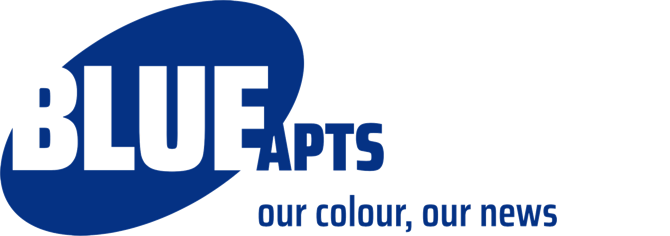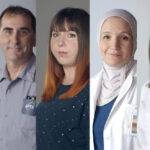An occupational therapist honoured for her contribution to pandemic response efforts
An occupational therapist honoured for her contribution to pandemic response efforts
Once again, projects led by APTS members have been rewarded with Stars du Réseau de la Santé (SRS) prizes from the Caisse Desjardins du Réseau de la santé. First prize in the High-Performance category went to a protocol – implemented in record time – that helped relieve the respiratory distress of COVID-19 patients by positioning them on their stomachs. Geneviève Thériault-Poirier, an occupational therapist at the CHUM who submitted the project, agreed to tell us about it.
 Why was this new protocol created?
Why was this new protocol created?
As COVID-19 began to unfold in Europe, we were paying close attention. It quickly became clear that prone positioning, in which patients suffering from acute respiratory distress are placed on their chest and abdomen to promote better oxygenation, was going to be crucial for treatment.
But the practice of prone positioning is labour intensive, costly and not widely accessible. You have to rent a specific kind of bed. Employees have to keep figuring how to use the rented equipment, and turning patients safely can require up to fifteen people. In France, they were putting more than twenty people per unit in the prone position, but throughout Québec only about ten beds were available. Faced with an acute shortage of equipment, we needed to find another way.
How was the protocol developed?
Just two weeks after Quebec’s first COVID-19 cases, we brought together a team that combined expertise from intensive care doctors, a nurse clinician, respiratory therapists and an occupational therapist (me). We watched a lot of how-to videos, compared existing protocols, and then tweaked and tailored them to address the challenges of our situation. All hands were on deck and no one was counting their hours. We knew we had to deal with a massive influx of patients and we needed to make sure healthcare personnel would be able to position them safely.
How did your occupational therapy expertise contribute to the process?
Occupational therapists are often called on to help when there are problems with the way a body is supported, positioned or aligned. In this case, we knew patients would be staying in the same position for long periods of time, so we needed to find the best position for avoiding pressure ulcers, contractures and nerve compressions. That would help shorten patients’ hospital stay once they had recovered from COVID-19.
Occupational therapists also have an overall perspective that helps them anticipate and limit potential injuries. That’s why I was asked to be an external observer for questions about intubation. Where should you put the tube so that it doesn’t get in employees’ way or force them to move an infusion bag when they turn the patient? Which way should the tubes go? How should they be secured to prevent disconnection?

Among other contributions, Geneviève Thériault-Poirier developed a cushion that supports the patient’s head in prone position.
Finally, I was responsible for developing a cushion to support the patient’s head in prone position. Although similar items existed on the market (gel cushions, for instance), actually getting them to treatment centres through procurement would have taken too long. Instead, we had to get creative with easily accessible materials. The result was a “DIY” cushion made from towels that are available in all units, string ties, and egg crate foam.
Interdisciplinarity seems to have been the key to the project’s success.
Absolutely. The threat of COVID-19 made barriers between disciplines fall overnight. Suddenly, we realized how much expert knowledge every personnel member can offer, and how important it is to apply that knowledge. Intensive care doctors monitored respiratory and physiological symptoms; nurses oversaw the installation of wires and tubes and orchestrated the turning manoeuvre; respiratory therapists ensured that everything was stable and connected, and were responsible for giving others the green light. Even people who weren’t involved in developing the protocol ended up playing a crucial role. I’m thinking especially of beneficiary attendants – once they were trained in the protocol, their experience and expertise went a long way towards optimizing it. Thanks to all these terrific people, we were able not only to manage a much higher flow of patients than usual, but to halve the time and personnel required for the turning procedure. We all came together in the face of adversity. I can’t imagine going back to working in isolation for future projects.
Would you like to implement this project in your own institution?
Contact advanced practice nurse clinician Phébé Gagnon-Courville to learn more.





